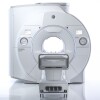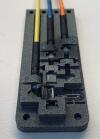How AI and remote monitoring are revolutionizing MR maintenance
by John R. Fischer, Senior Reporter | December 18, 2023
MRI
Many manufacturers like GE HealthCare will work with providers on the best time to carry out fixes remotely and in person before any actual failures occur, which helps avoid disrupting scheduled scans, unplanned downtime, and loss of revenue. For providers with large MR imaging fleets, knowing the criticality of each one is crucial to convey when prioritizing service requests and determining when to perform repairs.
Lothert says this also extends to preventive maintenance updates and upgrades, and that any remote monitoring platform should account for multiple types of monitoring, including machine performance, environmental conditions, parts status, cybersecurity, and more. Siemens Healthineers’ Guardian Program oversees performance but also can be combined with environmental monitoring. It also keeps cybersecurity in mind through continuous software updates with Advanced Now, which extends the life of the MR system to spare patients from paying huge investments for upgrades.
We repair MRI Coils, RF amplifiers, Gradient Amplifiers and Injectors.
MIT labs, experts in Multi-Vendor component level repair of: MRI Coils, RF amplifiers, Gradient Amplifiers Contrast Media Injectors. System repairs, sub-assembly repairs, component level repairs, refurbish/calibrate. info@mitlabsusa.com/+1 (305) 470-8013

“Extending means not only to keep it running but also adding on new applications and so forth,” said Lothert.
According to Philips, another major medical imaging OEM, in-house biomedical teams should consult with clinical teams as well as information security and technology teams to understand and ensure they are aligned on what their service needs are before striking an agreement with the OEM. They also should ensure that any servicing contract, which should be updated regularly, meets the needs of the entire facility rather than just one department.
While AI and remote monitoring can help meet these collective needs, providers also need to be proactive and take steps to prevent issues from existing in the first place. “Maintain the MR environment as outlined in your MR vendor planning/siting document,” recommends Lewein.
Utilizing AI and remote monitoring solutions to maintain and repair MR scanners most effectively comes down to the individual needs of the provider, how those needs relate to their MR scanning operations, and how much information they share with the OEM. While AI and remote monitoring show great promise, the provider’s actions are still the determining factor behind whether or not these technologies successfully help meet their needs.
Additionally, on-site visits, whether by an OEM field service engineer or in-house biomedical engineer, will always be required in some capacity, and AI-based remote monitoring should not be misconstrued now or in the future as a replacement for these personnel but rather as assistants that are poised to make the maintenance and repair of MR imaging scanners simpler and more effective for both the OEM and healthcare provider.
Back to HCB News
You Must Be Logged In To Post A CommentRegisterRegistration is Free and Easy. Enjoy the benefits of The World's Leading New & Used Medical Equipment Marketplace. Register Now! |
|















